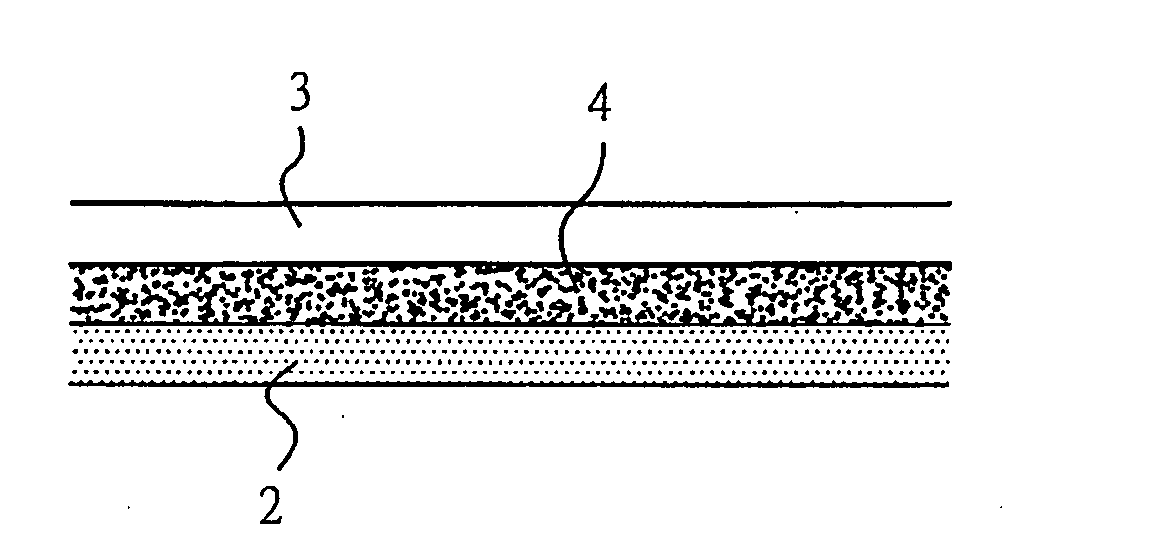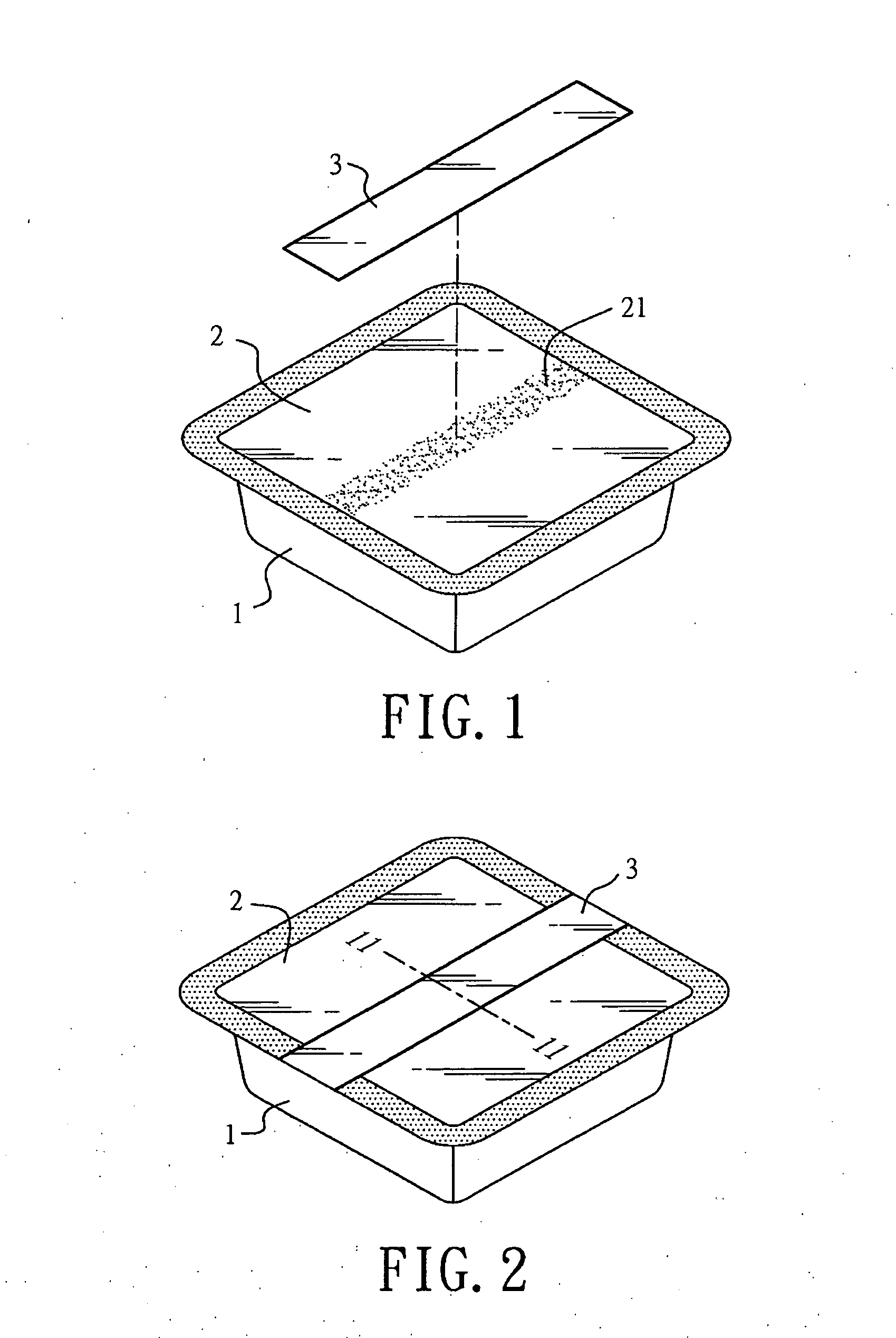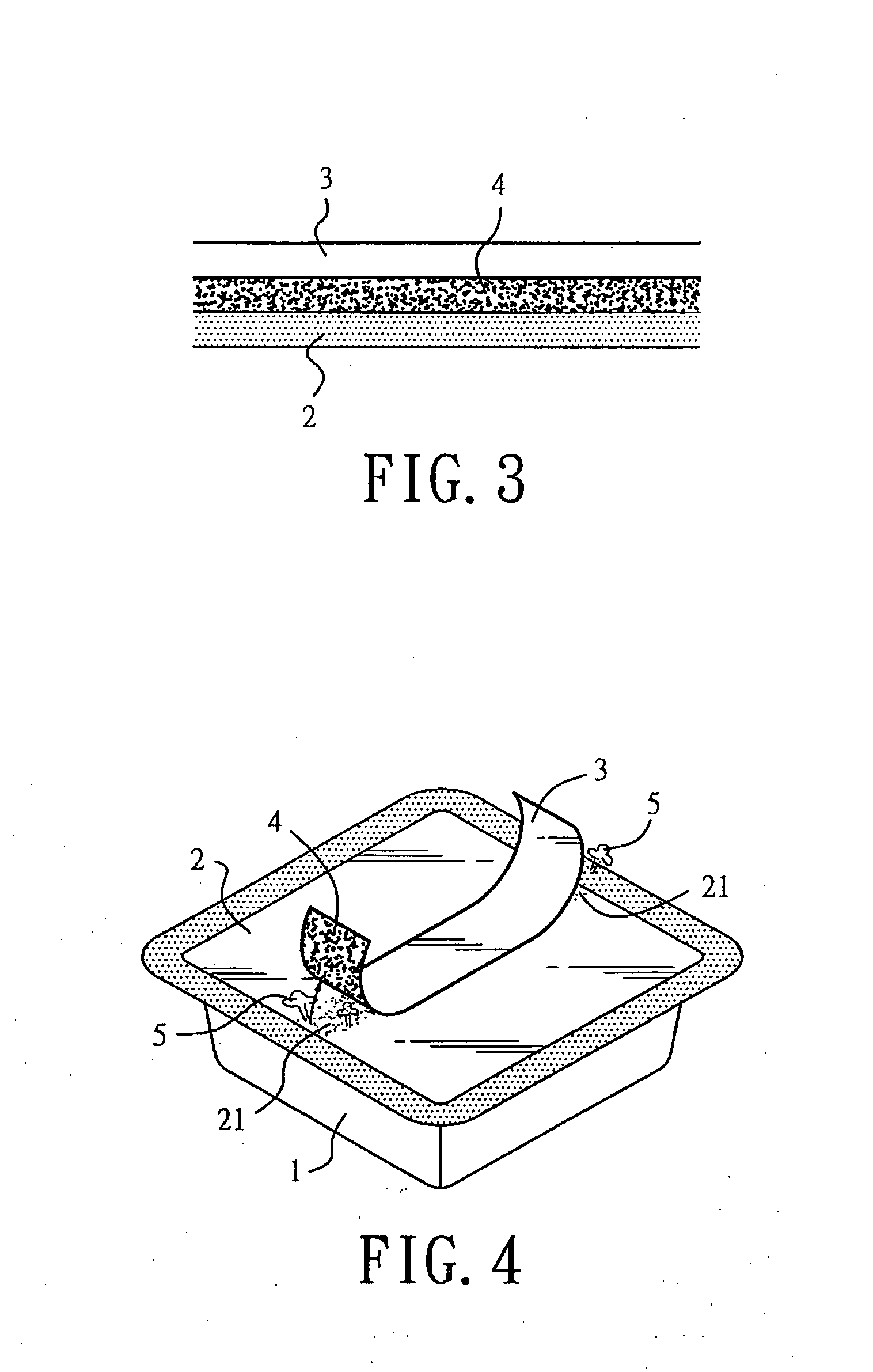In other words, temperature rising of a heated
system is dependent on foods but not the packaging material because the packaging material only has a lower heat conversion not enough to raise temperature quickly.
Two main problems occurring during heating and cooking foods by microwave in an open space are that foods lose water too fast, and become too dried after heated.
It is resulted in that the high volatile compositions with high
vaporization absorb
heat energy and quickly evaporate away from the foods, and the foods become drier to lose the original
flavor thereof.
However, the
plasticizer additives of the packaging material are directly in contact with foods during packaging, storing, transporting, or heating by microwave so that the
plasticizer additives contaminate the foods to danger health of food consumers.
However, the way to use the food packaging bag causes an inner space of the food packaging bag communicates with the
atmosphere so that most of high volatile compositions of foods received in the packaging bag may be lost during microwave heating and the foods become too dried after heated to lose the original
flavor thereof.
It is resulted in that the air burst phenomenon is happened to the food packaging bag and destroys structure thereof while losing considerable
water vapor and the foods become too dried after heated to lose the original flavor thereof.
The steam
cooker can heat the cooked foods and maintain its original flavor while the cooked foods may absorb too much
water vapor to become expanded or soggy and losing the taste.
It is resulted in that a portion of the cooked foods in contact with the wrap film absorbs too much
condensed water to become expanded and soggy while the other portion thereof loses too much water to become drier and harder so that heating by the
microwave oven causes the cooked foods to lose its original flavor.
Due to the
mechanical strength of a permeable material is in inverse proportion to
porosity thereof, the permeable material may still have a danger about the air burst phenomenon when it is used as a food packaging material applied to microwave heating.
Thereby, the permeable material made by the methods as described above is not suitable used as food packaging material applied to microwave heating, and its manufacturing cost is high while recycling of its extraction solutions was complicated.
Another conventional permeable material is disclosed in U.S. Pat. No. 5,865,926, wherein non-
woven fabric or
fiber fabric with high permeability are used as permeable films, but the permeable films with high manufacturing cost have a
macro porous property which limits the permeable films to only be applied to diaper or wet towel, but not to food packaging material for microwave heating.
Although the permeable film made by the conventional manufacturing methods has micro porous structure, the conventional manufacturing methods has higher manufacturing cost, and more complicated processes while still having a danger about the air burst phenomenon during microwave heating to limit its practicability.
It is resulted in that the permeable film would be melted in the heat spots to form holes while the high volatile compositions contained in foods would lose through the holes.
It should be noted that the conventional manufacturing methods are difficult to control the consistency of porous quality of the permeable film such as elongation ratio,
processing temperature, film thickness, and
mixing ratio while the inorganic
powder may contaminate the environment to cause a problem about
environmental protection.
Moreover, limit to the mixing compatibility of materials of the permeable film, the inorganic
powder and the polymeric material may cause multiple phases to form an opaque permeable film.
On the other hand, the conventional manufacturing methods need more complicated processes to form the permeable film.
Furthermore, when the permeable film is applied to food packaging material, the inorganic
powder contained therein may contaminate foods within the food packaging material, and generate unpleasant odors.
When the permeable film is in contact with oily or alcoholic foods, the permeable film cannot prevent oil or
alcohol from passing therethrough while the permeable film absorbs the oil or
alcohol therein.
Furthermore, during accommodating foods or sterilizing under high temperature, the permeable film tends to peel off or break.
However, the permeable food packaging bags or containers can only preserve foods a short time because those materials can not pack foods by at least one method of vacuum packaging or a process of
modified atmosphere packaging (MAP) through purging with
carbon dioxide (CO2),
nitrogen (N2), or other
inert gas for prolonging the
shelf life of the foods.
 Login to View More
Login to View More 


